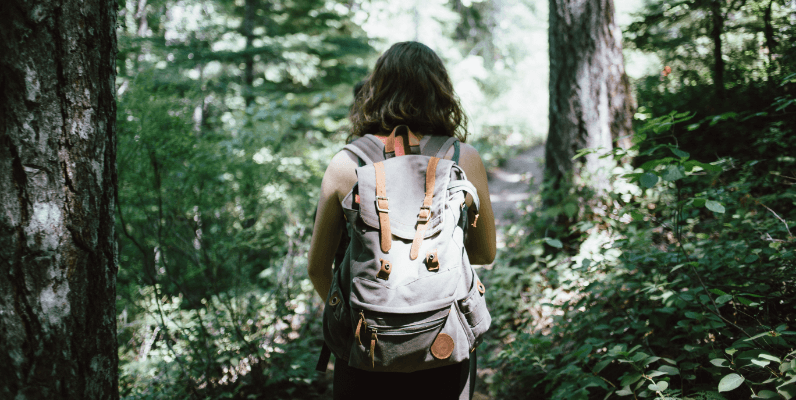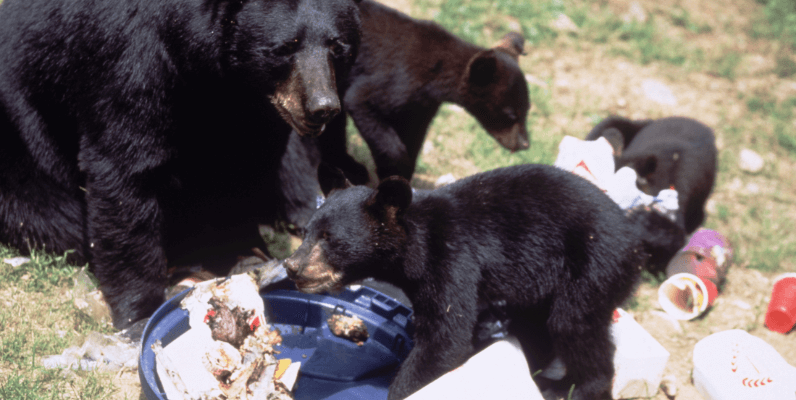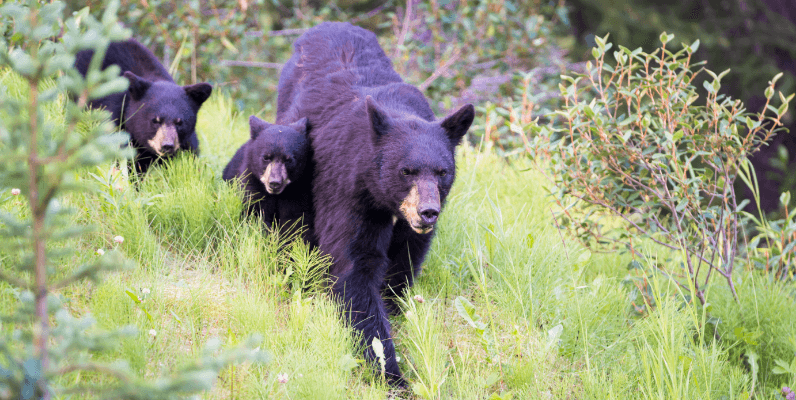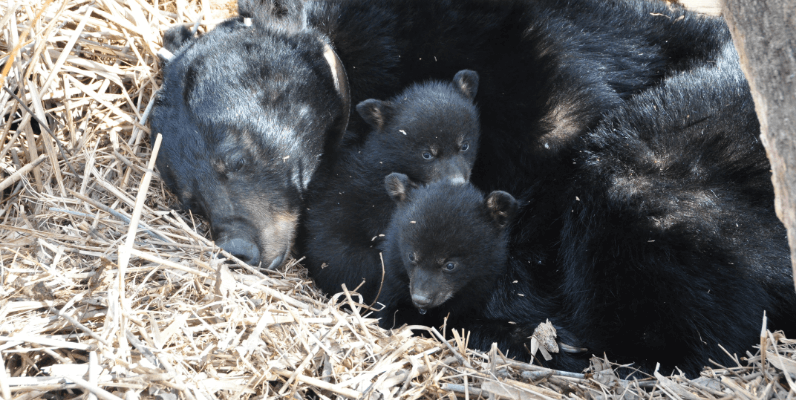General Description
The American Black Bear (Ursus americanus) is a large-bodied, muscular animal that is quite agile. Black bears can run up to 35 miles per hour. New Jersey’s adult male black bears, called boars, weigh on average 400 pounds. Their weight can range from 150 pounds to over 600 pounds. Adult females, called sows, weigh on average 175 pounds. Their weight can range from 150 pounds to over 400 pounds.
Adult black bears are about 3 feet high when on all four paws and can range from 5 feet to 7 feet tall when standing. Black bears can be many different colors, ranging from brown to black. Most black bears in New Jersey are black, but there has been one documented black bear in the state that is cinnamon brown in color. About fifteen percent (15%) of New Jersey’s bears also have a white chest blaze. The muzzles of black bears are typically brown.
Black bears have a remarkable sense of smell. They have been documented detecting scents at more than two miles away from a food source. The area of the nasal mucous membrane in a bear’s head is 100 times larger than that in a human. Their excellent sense of smell is what sometimes leads them on a search for food in residential neighborhoods and campgrounds.
Black bears also have good hearing and can see well, although they are near-sighted. Their ability to see color helps them when foraging for foods such as berries and fruits. They can also see well at night, due to a reflective layer in the back of their eyeball which mirrors the moonlight.
Black bears are strong swimmers. They are also excellent climbers who have five toes on each paw with claws that are about two inches long and curved for climbing trees. Both adults and cubs will climb trees for food and to escape disturbances. Black bears can live for 25 years in the wild. Signs of a black bear in the area include bear scat, paw prints and marked trees

Habitat and Distribution
Black bears live in mixed hardwood forests, dense swamps and forested wetlands. They prefer areas with dense cover. In New Jersey, excellent bear habitat is found primarily within Sussex, Passaic, Warren and Morris counties. However, as the bear population increases, black bears are expanding their range both east and south. Black bear sightings have now been confirmed statewide. Bears are highly adaptable and can live among human development.
Black bears establish a home range, which is the area of habitat the animal uses throughout the year. New Jersey’s sows typically have a home range of less than 2 square miles. The home range of boars is larger and may overlap those of multiple sows. In certain areas within the northwestern portion of the state, there are as many as three bears per square mile.
Based on recent (2012) population analysis using tag returns received during the 2011 bear season, the population estimate for the area north of I-80 and west of I-287 was 2,800-3,000 bears prior to the 2011 black bear hunting season. This estimate does not take into account the 2011 harvest or the number of cubs born in January, 2012.
Fish and Wildlife biologists have calculated a 2020 population estimate of 3,158 bears for the region north of Interstate 78 and west of Interstate 287, which is an increase from the 2019 estimated population for this same region of 2,208. Fish and Wildlife biologists have not extrapolated the estimates throughout bear occupied range in New Jersey.
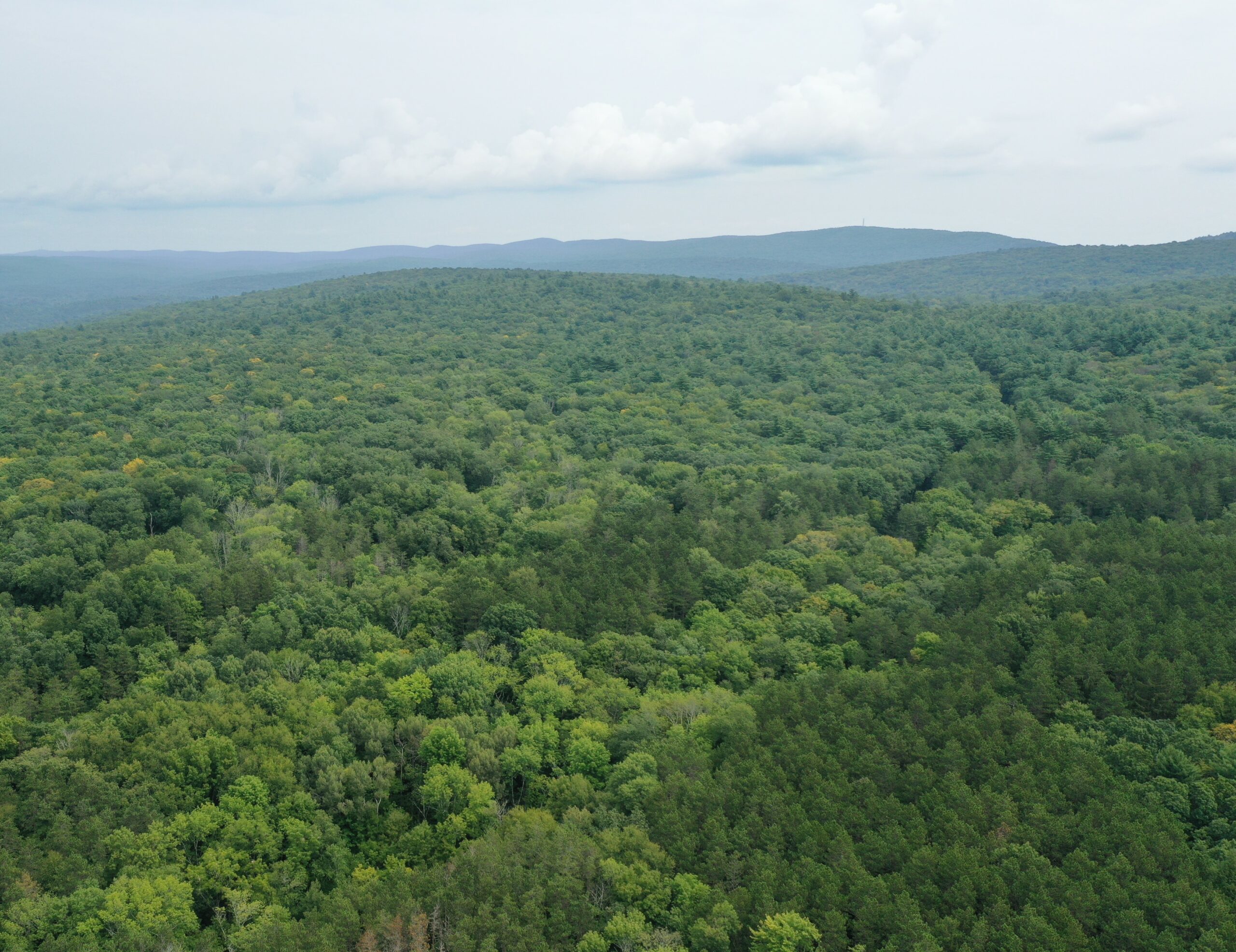
Diet
Black bears are omnivorous. As opportunistic feeders they will consume whatever food is available. About seventy-five percent (75%) of a black bear’s diet is comprised of plants. They will naturally consume berries, fruit, nuts, insects, bird eggs, small mammals and carrion. When black bears emerge from their winter dens they will primarily eat newly emergent skunk cabbage, grasses, forbs, tubers, bulbs and insects. They may also feed on carrion, such as white-tailed deer carcasses.
With the onset of summer, black bears will consume more soft mast items, such as blueberries, raspberries, blackberries and wild cherries. By fall, their diet will consist mostly of hard mast items, such as acorns, beechnuts and hickory nuts. Throughout late summer and fall, black bears need to consume a minimum of 20,000 calories a day to prepare for the winter den season. The main source of unnatural foods for black bears in New Jersey
is garbage.

Reproduction
Black bears in New Jersey generally begin mating at three years of age. However, reproduction by females as young as two years of age, and as old as 20 years of age, has been documented in the state.
Mating season runs between late May and August and peaks in June and July. Both male and female black bears will mate with multiple partners to ensure reproductive success. After mating, sows undergo a process called “delayed implantation.” The fertilized egg divides at the cellular level until it becomes a ball of cells called a blastocyst. The blastocyst remains free-floating in the bear’s uterus and does not implant in the uterine lining until November, about six months after fertilization occurs.
It appears that sows must be in overall good health and in a region with available food sources for the fertilized egg to implant and not be aborted. The fertilized egg will only implant in sows who have obtained adequate body weight and a large enough fat reserve to ensure that she can carry cubs to term and provide milk for them throughout the winter den period.
Cubs are born in January and weigh on average between 8 and 16 ounces at birth. They are born blind and covered with fine hair. Cubs’ eyes open between 25 and 30 days. New Jersey’s sows produce an average litter size of 3 cubs. Litters with as few as one cub and as many as six cubs have been documented in the state. A sow is very aware of the cubs’ presence in the den and ensures that they stay close to her body for warmth. The cubs nurse and develop quickly on the sow’s milk, which is high in fat and protein.
By March, cubs weigh about five pounds. Cubs and sows emerge from dens in April. In New Jersey, seventy percent (70%) of cubs survive their first year. Cubs remain with their mother for up to 18 months. Consequently, female black bears generally breed every other year.
Throughout the year and a half cubs spend with their mother they are taught basic skills, such as how to find food and avoid danger. By one year of age, at which time cubs are called yearlings, they weigh about 80 pounds. When yearlings are 16 to 18 months old the sow breaks up the family unit by aggressively chasing off the yearlings so that she can breed again. Yearlings are then left to fend for themselves and search for their own home range. Female yearlings are often permitted to share portions of their mother’s home range, while males must travel further to establish their home range.
The most significant driver of black bear reproduction in New Jersey is the consistent natural food base provided by the state’s excellent habitat, so control of human provided food such as garbage cannot control bear population growth. If access to human provided food was eliminated, the consistency of adequate natural autumn food crops in New Jersey would allow productivity to remain high in most years and the bear population would continue to increase.
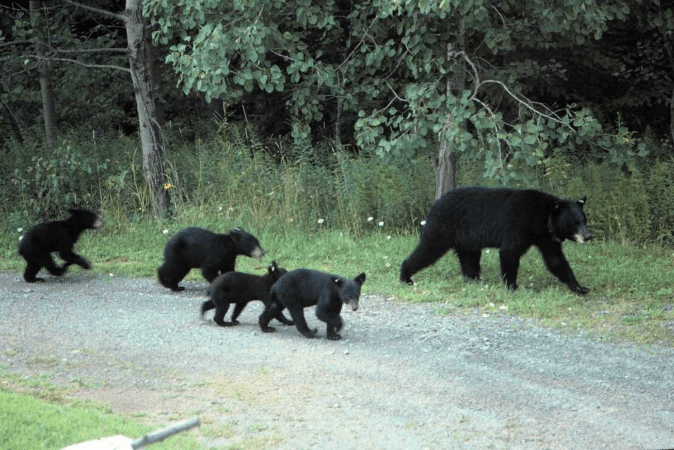
Winter Dormancy
Black bears are not true hibernators and may be active all year long. During the winter, black bears enter a state of winter dormancy called torpor. While in the state of torpor their heart rate and respiratory rate slow and their body temperature slightly drops, but not as much as in true hibernators (such as chipmunks or woodchucks).
Black bears typically do not urinate or defecate while in torpor. The small amount of urine that is produced is reabsorbed by their kidneys. They live off of their body fat, which is metabolized to produce the calories and water that they need to survive. They generally lose between eighteen percent (18%) and twenty percent (20%) of their body fat while in their dens and they are able to maintain their bone and muscle mass. While in torpor black bears are capable of being easily awakened if disturbed and they may leave their dens on mild winter days in search of food.
Black bears begin entering their winter dens in the fall to avoid periods of food shortage and severe weather. Impregnated females typically enter dens first, during the last week in October. Males may not enter dens until December. Den sites generally include ground nests, excavation sites, brush piles, hollow trees, rock cavities and sometimes beneath houses and other buildings. The den sites are typically small in size to retain body heat and ensure that black bears stay well insulated.

Black Bear Behavior
Black bears are generally solitary animals, with the exception of sows with cubs. They tend to be crepuscular, meaning they are most active shortly before sunrise and again after sunset. However, they can be active during the day and may be active throughout the night. They will adjust their routines when it affords them the opportunity to take advantage of human-derived food sources, such as human garbage left out overnight or food scraps at a campground.
Black bears actively forage for food in the spring after they emerge from dens and in the fall when they are actively feeding to prepare for the winter den period. Black bears are also very active throughout the summer breeding season. These are the times of year when black bear/human encounters are most common, due to bears searching for food. On a day to day basis, black bears will spend time resting in day beds at the base of trees or in tree limbs. Black bears are clever animals and learn quickly. They can figure out how to access food sources if not properly secured.
Black bears are typically not aggressive animals and tend to be wary of people. They do, however, engage in posturing to intimidate other animals and people when establishing dominance or when they feel threatened. And while extremely rare, predatory attacks do occur, as happened in West Milford, Passaic County, in September, 2014. It is the first documented bear fatality in New Jersey’s history.
Black bears may exhibit a number of expressions and actions in an attempt to intimidate. When agitated, a black bear may pop its jaws, utter a series of huffs or swat the ground. They will sometimes bluff charge an intruder when cornered, threatened or attempting to steal food. Sows will vocalize to cubs when sensing danger and both adults and cubs will run away and climb trees to escape disturbances. Black bears stand on their hind legs to obtain a better view of objects and also to assist with detecting scents. Predatory attacks, however, can occur with little or no warning.
Problems between black bears and people can occur when black bears learn to associate people with food. Habituation to human food sources may cause a black bear to become bold and lose its fear of people.

 Official Site of The State of New Jersey
Official Site of The State of New Jersey




